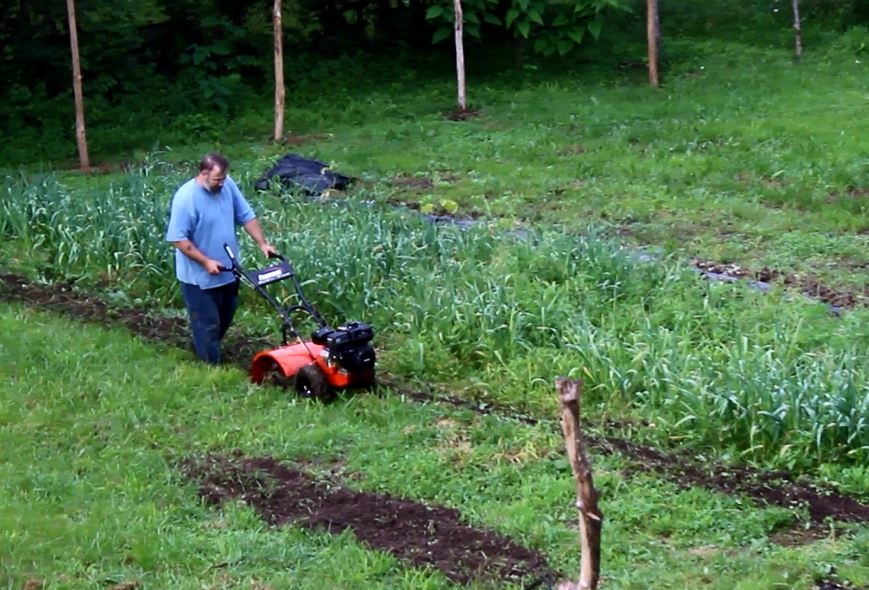I wanted to share this article with you. Detroit and Flint have been the canaries in the coal mine with regard to industrial collapse and de-urbanization. I’ve been watching with interest what role urban agriculture will play. Mayda and I have talked about how cool it would be if the Mock Park area of Columbus/Mifflin Township were declared an urban agriculture zone as an economic development initiative, but Detroit’s going about it all the wrong way.
Essentially, Detroit is now a sprawling, sparsely populated city. It can’t afford police and fire services for the whole area without the tax base to support it, so it wants to concentrate the remaining population into a few neighborhoods. Some of the people don’t want to go. The city is talking about eminent domain to take these people’s homes away from them.
I have mixed feelings about this. I think shrinking is a good plan for Detroit, but I dislike heavy-handed authoritarianism, especially about something as severe as uprooting people from their homes and seizing something that’s such a major investment for most people. I’m cool with eminent domain for the abandoned houses, but I think the people still residing there should be given the option to stay with the understanding that services will no longer be provided to that area. Disincorporate those areas. Put them under county control. Rezone them as agricultural.
Moreover, give the residents first option to buy the surrounding properties, perhaps with the stipulation that they have to demolish or re-purpose unoccupied houses. If they want to further require that agriculture be practiced there, I suppose they could do that, too, though that might be pushing the envelope just a bit. Why should residents be penalized for hanging in there for so long? If they like living in a less populous place, why should they be forced to live in a densely populated neighborhood just because they used to live in one? It’s ridiculous for them to presume they can tell people where to live just because their treasury has shrunk.
Can you imagine Columbus ordering people in Westerville and Gahanna to move downtown and start paying Columbus taxes so the city can pay for the police budget next year? Maybe Detroit could start snatching people off the interstate highways and forcing them to live in these new communities. Really, what’s the difference? They’re talking about conscripting people to live in their new, smaller city, and coercing them into it with the threat of homelessness. “We’re gonna take your house now. You can come live downtown and pay taxes, or you can beat it.”
That really is what it comes down to, because fair market value–what a government is supposed to compensate a landowner when they exercise eminent domain–is not enough for them to buy a home anywhere else. Detroit will probably offer them a break on a house in the new dense parts of the city, maybe even an even swap. If they don’t take it, well, here’s your fifty bucks (or whatever a house in Detroit is worth these days–I’d heard they were going for as low as ten dollars in some auctions where lots were bundled together).
Let’s see if Detroit can manage to create an appropriately sized, well-designed city that incorporates agriculture without resorting to Machiavellian tactics.
Detroit wants to save itself by shrinking
By DAVID RUNK, Associated Press Writer David Runk, Associated Press Writer Mon Mar 8, 4:33 pm ET
DETROIT – Detroit, the very symbol of American industrial might for most of the 20th century, is drawing up a radical renewal plan that calls for turning large swaths of this now-blighted, rusted-out city back into the fields and farmland that existed before the automobile.
Operating on a scale never before attempted in this country, the city would demolish houses in some of the most desolate sections of Detroit and move residents into stronger neighborhoods. Roughly a quarter of the 139-square-mile city could go from urban to semi-rural.
Near downtown, fruit trees and vegetable farms would replace neighborhoods that are an eerie landscape of empty buildings and vacant lots. Suburban commuters heading into the city center might pass through what looks like the countryside to get there. Surviving neighborhoods in the birthplace of the auto industry would become pockets in expanses of green.
Detroit officials first raised the idea in the 1990s, when blight was spreading. Now, with the recession plunging the city deeper into ruin, a decision on how to move forward is approaching. Mayor Dave Bing, who took office last year, is expected to unveil some details in his state-of-the-city address this month.
“Things that were unthinkable are now becoming thinkable,” said James W. Hughes, dean of the School of Planning and Public Policy at Rutgers University, who is among the urban experts watching the experiment with interest. “There is now a realization that past glories are never going to be recaptured. Some people probably don’t accept that, but that is the reality.”
The meaning of what is afoot is now settling in across the city.
“People are afraid,” said Deborah L. Younger, past executive director of a group called Detroit Local Initiatives Support Corporation that is working to revitalize five areas of the city. “When you read that neighborhoods may no longer exist, that sends fear.”
Though the will to downsize has arrived, the way to do it is unclear and fraught with problems.
Politically explosive decisions must be made about which neighborhoods should be bulldozed and which improved. Hundreds of millions of federal dollars will be needed to buy land, raze buildings and relocate residents, since this financially desperate city does not have the means to do it on its own. It isn’t known how many people in the mostly black, blue-collar city might be uprooted, but it could be thousands. Some won’t go willingly.
“I like the way things are right here,” said David Hardin, 60, whose bungalow is one of three occupied homes on a block with dozens of empty lots near what is commonly known as City Airport. He has lived there since 1976, when every home on the street was occupied, and said he enjoys the peace and quiet.
For much of the 20th century, Detroit was an industrial powerhouse — the city that put the nation on wheels. Factory workers lived in neighborhoods of simple single- and two-story homes and walked to work. But then the plants began to close one by one. The riots of 1967 accelerated an exodus of whites to the suburbs, and many middle-class blacks followed.
Now, a city of nearly 2 million in the 1950s has declined to less than half that number. On some blocks, only one or two occupied houses remain, surrounded by trash-strewn lots and vacant, burned-out homes. Scavengers have stripped anything of value from empty buildings. According to one recent estimate, Detroit has 33,500 empty houses and 91,000 vacant residential lots.
Several other declining industrial cities, such as Youngstown, Ohio, have also accepted downsizing. Since 2005, Youngstown has been tearing down a few hundred houses a year. But Detroit’s plans dwarf that effort. The approximately 40 square miles of vacant property in Detroit is larger than the entire city of Youngstown.
Faced with a $300 million budget deficit and a dwindling tax base, Bing argues that the city can’t continue to pay for police patrols, fire protection and other services for all areas.
The current plan would demolish about 10,000 houses and empty buildings in three years and pump new investment into stronger neighborhoods. In the neighborhoods that would be cleared, the city would offer to relocate residents or buy them out. The city could use tax foreclosure to claim abandoned property and invoke eminent domain for those who refuse to leave, much as cities now do for freeway projects.
The mayor has begun lobbying Washington for support, and in January Detroit was awarded $40.8 million for renewal work. The federally funded Detroit Housing Commission supports Bing’s plan.
“It takes a true partnership, because we don’t want to invest in a neighborhood that the city is not going to invest in,” said Eugene E. Jones, executive director of the commission.
It is not known who might get the cleared land, but with prospects for recruiting industry slim, planners are considering agricultural uses. The city might offer larger tracts for sale or lease, or turn over smaller pieces to community organizations to use.
Maggie DeSantis, a board member of Community Development Advocates of Detroit, said she worries that shutting down neighborhoods without having new uses ready is a “recipe for disaster” that will invite crime and illegal dumping. The group recently proposed such things as the creation of suburban-style neighborhoods and nature parks.
Residents like Hardin want to keep their neighborhoods and eliminate the blight.
“We just try to keep it up,” he said. “I’ve been doing it since I got it, so I don’t look at nobody trying to help me do anything.”
For others, Bing’s plans could represent a way out.
Willie Mae Pickens has lived in her near east-side home since the 1960s and has watched as friends and neighbors left. Her house is the only one standing on her side of the street.
“They can buy it today. Any day,” said Pickens, 87, referring to city officials. “I’ll get whatever they’ll give me for it, because I want to leave.”
(This version corrects that Younger is past executive director of group, since she left it last week. It also corrects that renewal work money was granted in January, instead of last month.)
http://news.yahoo.com/s/ap/20100308/ap_on_bi_ge/us_downsizing_detroit



